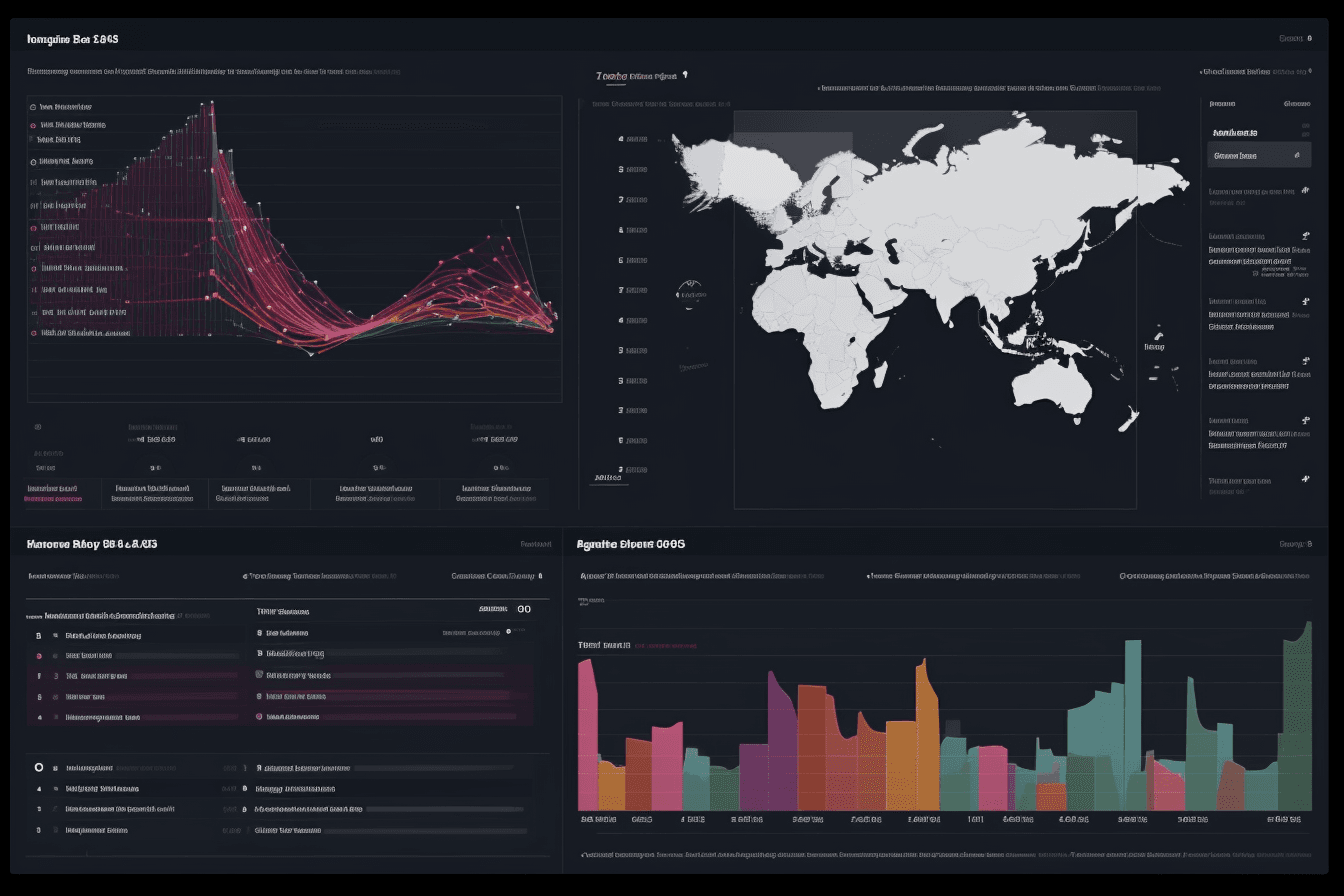How integrating AI tools into the newsroom's CMS can revolutionise the publishing process
5 Jun 2023
Here’s how AI-powered features in the CMS can help streamline content creation.
Speed, accuracy and audience engagement are paramount in journalism today, as they always have been. But it’s the integration of AI tools into newsrooms' CMS that has proven to be a transformative force. Here’s how AI-powered features in the CMS can help streamline content creation and improve the overall journalistic experience.
Section 1: Natural language processing (NLP) for content analysis
Natural Language Processing (NLP) tools are invaluable, not only for journalists, but also for the entire news production workflow. By seamlessly integrating NLP tools into newsroom content management systems, new levels of efficiency, accuracy and engagement can be achieved. This section looks at the transformative potential of such integration and its impact on the content creation process.
1) Streamlining information processing
The sheer volume of textual data in the digital age can overwhelm newsrooms, making efficient data processing essential. Integrating NLP tools into the CMS enables automatic text summarisation, extraction of key information and sentiment analysis. Journalists can quickly capture the key details of breaking news or complex reports, saving valuable time in content creation.
2) Improve the quality and relevance of content
NLP's ability to analyse sentiments and nuances in texts can significantly impact the quality of content. By integrating sentiment analysis, editors can assess the tone of articles and ensure they are consistent with the intended message. In addition, NLP-supported topic modelling improves the relevance of content by identifying the most important topics and helping journalists focus on what matters most to their readers.
Watch: An AI-based concept we designed to help detect sensitive topics, where algorithms can suggest softening the tone of the article, adding a line about where to find help or a trigger warning.
3) Cross-language features
The global nature of modern journalism often makes it necessary to translate content into multiple languages. Integrating translation tools into the CMS overcomes language barriers and allows reporters to access, translate and embed different sources worldwide. This functionality improves the scope of news reporting and promotes intercultural understanding.
4) Data-driven insights for editorial decision-making
NLP-driven insights, such as trending topics or emerging sentiments, can influence editorial decisions. When integrated into the CMS, these insights help editors shape the news agenda, allocate resources effectively and stay ahead of the curve. Data-driven decisions lead to more effective reporting and stronger engagement with audiences.
How three leading European newsrooms handle editorial analytics
5) Collaboration and knowledge sharing
A well-integrated CMS with NLP features encourages collaboration in newsrooms. Journalists can share insights, tagged information and relevant data directly in the system, which improves teamwork and ensures that the entire team benefits from NLP-powered tools.
Read also: How to build a knowledge system around a new tool?
Section 2: Visual data interpretation with AI
Visual data interpretation has proven to be a powerful tool for communicating complex information. When seamlessly integrated into a newsroom's content management system (CMS), AI-driven visual data interpretation brings a new dimension to news reporting. This section explores the role that AI-powered features designed explicitly for visual data interpretation play in transforming data-rich stories into compelling visual narratives.
Read also: Which AI tools in journalism are really worth the hype?
1) Dynamic data visualisation
AI tools within the CMS can automatically generate dynamic and interactive data visualisations such as charts, graphs, heat maps and timelines. These visual elements increase the visual appeal of news articles and allow readers to engage more deeply with the underlying data, leading to a better understanding of the story. This integration speeds up the creation of meaningful visualisations and allows journalists to present data-driven insights without requiring extensive design skills.

AI tools within the CMS can automatically generate dynamic and interactive data visualisations such as charts, graphs, heat maps and timeline (image generated by Midjourney)
2) Complex pattern recognition
AI-driven algorithms excel at recognising complex patterns in large datasets. By integrating pattern recognition capabilities into the CMS, newsrooms can uncover hidden trends, correlations and anomalies in the data. This enables journalists to discover unique angles on stories that might have remained hidden, resulting in more comprehensive and insightful reporting.
6 pillars of editorial analytics at Mediahuis – with Yves Van Dooren
3) Custom infographics
Creating custom infographics directly in the CMS is a key advantage for newsrooms. AI-powered design tools can transform raw data into visually appealing and informative infographics that enable journalists to convey important information concisely and effectively. This integration enhances the visual storytelling aspect of news articles, making them more accessible to a wider audience.
Watch: A feature that automates social media asset generation. A journalist selects an article they wish to share and then choose a suitable social media channel and a visually appealing template.
4) Real-time data visualisation
In a world where information constantly evolves, real-time data visualisation within the CMS ensures that news articles remain current and informative. AI tools can automatically update visualisations as new data becomes available, allowing journalists to present the latest developments without manual intervention. This integration is particularly valuable for reporting on live events, tracking real-time statistics and providing up-to-date insights.
Section 3: Automated fact-checking and verification
Integrating AI-driven automated fact-checking tools directly into a newsroom's content management system (CMS) represents a significant advance in maintaining the integrity of news reporting. This section looks at the transformative role of AI in fact-checking and verification and how this integration enables journalists to deliver trustworthy and reliable news to their audiences.
Read also: 7 bitter pills to swallow if you want AI in your newsroom
1) Real-time fact-checking
AI-powered fact-checking tools within CMS enable journalists to check the accuracy of the information in real-time as articles are developed and published. By checking claims against trusted sources and databases, these tools identify potential inaccuracies and provide immediate feedback to journalists, enabling them to correct or clarify information quickly. This integration ensures that news articles are as accurate and up-to-date as possible.
Watch: A fact-checking AI feature that helps journalists deal with news verification and ensure the accuracy of facts. It analyses news content in real time and highlights mistakes and inaccuracies.
2) Verification of sources and information
The integration of AI-driven verification tools into the CMS streamlines the process of verifying sources and data. These tools can automatically check the credibility of sources, detect possible bias and assess the authenticity of images, videos and documents. Journalists can rely on these tools to confirm the reliability of the information they include in their reports, reducing the risk of spreading false or misleading content.
3) Combating misinformation
AI tools can identify patterns of misinformation and disinformation. By integrating AI-driven algorithms into the CMS, newsrooms can proactively identify misleading narratives, false claims and fabricated stories. In this way, journalists can effectively combat misinformation and present readers with verified and accurate information that promotes a more informed public discourse.
Section 4: Audience insights and personalisation
Understanding and engaging audiences is central to the success of a newsroom. Integrating AI-powered audience insights and personalisation features into a newsroom's content management system (CMS) represents a significant advance in tailoring content to readers' preferences, fostering deeper engagement and retention. This section explores how AI-driven tools within the CMS enable newsrooms to understand their audience better and deliver content that resonates personally.
1) Behavioural analysis and user preference
AI tools within the CMS can analyse user behaviour and provide valuable insights into what topics readers are most interested in, how they consume content and when they are most active. This analysis enables editorial teams to refine their content strategy and ensure that the articles published match the preferences of the readership. By understanding reader habits, newsrooms can optimise content planning and delivery to reach the right audience at the right time.
6 pillars of editorial analytics at Mediahuis – with Yves Van Dooren
2) Personalised content delivery
Integrating personalisation features enables newsrooms to deliver a personalised content experience to their readers. AI-driven algorithms can recommend articles based on a reader's past usage behaviour, increasing the likelihood of engagement. By incorporating user preferences, such as topic interests, these tools enable the CMS to deliver content tailored to each reader's individual tastes, creating a more immersive and relevant news experience.
3) Engagement analysis and feedback loop
AI-driven audience insights tools give editors valuable feedback on the performance of their content. Metrics such as click-through rates, time spent on articles and user engagement can be analysed in real-time. Using this data, journalists can measure the impact of their work, refine their storytelling techniques and adapt to changing audience preferences.
Conclusion
By harnessing AI-driven features embedded within the CMS, newsrooms can unburden their journalists from repetitive tasks, allowing them to delve deeper into investigative reporting, conduct in-depth analysis, and craft compelling narratives that resonate with their readers.
We have over 40 AI-based concepts for newsrooms in various stages of production. If you want to hear more about them and chat about possible implementation of AI in your newsroom, contact Slawek, our Head of Relations & Sales:



